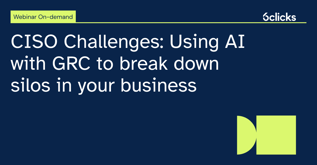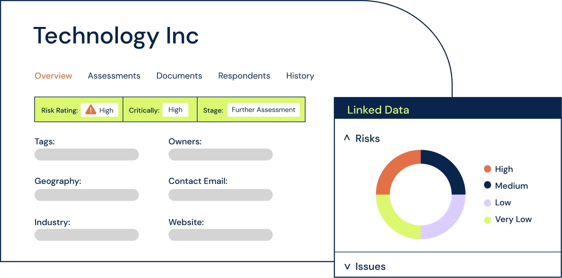A vendor risk assessment questionnaire is a valuable tool for organizations to identify potential risks posed by their third-party vendors. These questionnaires aim to uncover security threats and vulnerabilities that could compromise the company's data integrity and safety. Developing a tailored risk assessment process is crucial for effective third-party risk management (TPRM) and ensuring cybersecurity preparedness. To assist in this process, there are various options available for selecting the right vendor risk assessment questionnaire. Organizations can create new questionnaires, reuse existing ones, or leverage best-practice guidance provided by industry-leading organizations.
The top vendor risk assessment questionnaires
Here are the top vendor risk assessment questionnaires used in IT vendor security assessments:
- Center for Internet Security (CIS) Critical Security Controls (CSC)
- Cloud Security Alliance (CSA) Consensus Assessments Initiative Questionnaire (CAIQ)
- National Institute of Standards and Technology (NIST) SP 800–53
- Shared Assessments Group Standardized Information Gathering Questionnaire (SIG)
- Vendor Security Alliance (VSA) Questionnaire (VSAQ)
Each questionnaire offers a comprehensive set of questions covering different aspects of vendor security, such as external threats, internal processes, and compliance. These security questions can be used to assess the level of risk for your potential vendors. Let's explore these questionnaires in detail.
-
Center for Internet Security (CIS) Critical Security Controls: CIS provides a framework of 20 controls that address critical security systems and data flow in combating cyber threats. These controls cover common manifestations of threats and help organizations adjust defensive actions. The questionnaire includes over 150 questions mapped to recognized cybersecurity standards and regulatory frameworks.
-
Cloud Security Alliance (CSA) Consensus Assessments Initiative Questionnaire (CAIQ): The CAIQ survey is designed for cloud consumers and auditors to assess the security capabilities of cloud service providers. It offers transparency on how technologies, tactics, data protection, and risk management are implemented. The questionnaire can be customized based on individual needs and aligns with CSA Guidance and Cloud Controls Matrix (CCM).
-
National Institute of Standards and Technology (NIST) SP 800–53: NIST SP 800–53 provides standards and guidelines for federal agencies and contractors to meet the requirements of the Federal Information Security Management Act (FISMA). It offers a holistic approach to information security and risk management, strengthening information systems against cyber-attacks. The NIST controls support the development of secure and resilient federal information systems.
-
Shared Assessments Group Standardized Information Gathering Questionnaire (SIG): The SIG questionnaire is a comprehensive tool for assessing cybersecurity, IT, privacy, data security, and business resiliency. SIG Core consists of over 1,200 questions, providing an in-depth assessment of service providers handling sensitive data. SIG Lite offers a basic level of due diligence with nearly 200 questions, serving as an initial benchmark.
-
Vendor Security Alliance (VSA) Questionnaire (VSAQ): The VSAQ is a widely recognized resource for evaluating third-party cybersecurity and vendor security compliance. It consists of seven sections covering various sources of vendor risk, including data protection, security policies, proactive and reactive security measures, software supply chain management, customer-facing application security, and compliance.
When selecting a cyber security vendor questionnaire, it is essential to consider your organization's specific requirements and the level of detail needed to assess vendor risks effectively. These questionnaires are regularly reviewed and updated by experts in the field. Leveraging the power of platforms like 6clicks can further enhance your vendor risk assessment process by providing licensed versions of these questionnaires and facilitating integrated risk assessment data.
Also, check out the 6clicks vendor risk management solution and our content library, which includes a range of vendor risk assessment templates. Book a demo with us below if you'd like to see 6clicks in action.
Related useful resources
Written by Andrew Robinson
Andrew started his career in the startup world and went on to perform in cyber and information security advisory roles for the Australian Federal Government and several Victorian Government entities. Andrew has a Masters in Policing, Intelligence and Counter-Terrorism (PICT) specialising in Cyber Security and holds IRAP, ISO 27001 LA, CISSP, CISM and SCF certifications.









